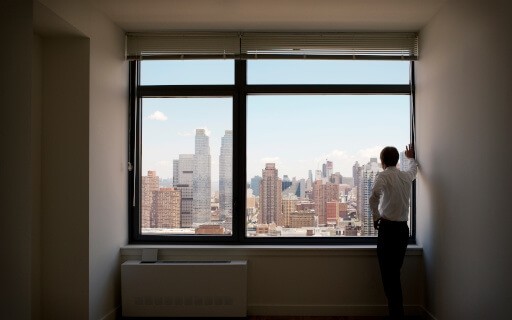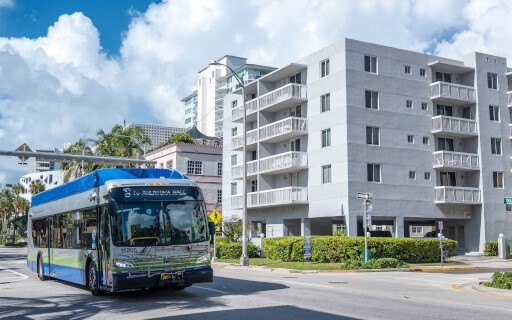Running a rental property requires positive cash flow, meaning you earn more revenue than it costs to maintain the property. To determine whether your real estate has a good return on investment (ROI), continue reading to learn how to run a rental property cash flow analysis with expert precision.
What Is Cash Flow?
Cash flow refers to money you earn from your rental property. It starts with cash your property generates from rent payments and other sources of rental income. Afterward, you calculate the gross cash flow by deducting taxes, property management fees, debts, utilities, and additional operational costs. Ultimately, your primary objective as a landlord is to maximize your cash flow and earn a profit.
Greater cash flow makes it easier to minimize investment and financial risk. You can pay your standard property expenses by generating more rental income and still have money for other investments, upgrades, and unexpected costs. For example, pipes are susceptible to bursting during the cold season. With enough cash flow, you can make critical repairs to those pipes without breaking the bank or going into debt.
How to Run a Rental Property Cash Flow Analysis in 4 Steps
A rental property cash flow analysis is a method allowing you to calculate and measure how much money you are earning from your rental property. Whether you’re a new property owner or a seasoned investor, this data is essential for the financial success of your rental property. Here are four steps to run an accurate rental cash flow analysis:
1. Estimate the gross cash flow
To begin the cash flow analysis, calculate your gross earnings for the entire year. Remember, gross cash flow/income is the money you have earned before factoring in expenses. You can find this information in your financial records, such as an income spreadsheet. Here are the most common items for you to review:
- Gross rental income: (Monthly rent amount x number of units x number of months). For example, $1500 x 2 units x 12 months is $36,000 dollars a year in gross rental income.
- Additional income: Include any other sources of income you’re earning from your rental property, such as pet rent and application fees. For example, you earn $500 extra dollars a month.
- Vacancy rate: This metric describes how much rental income you lost based on the percentage of time the property sat vacant within a year. For example, if your rental property has a 15% vacancy rate (out of $36,000 gross rental income), that is $5,400 you missed out on because of tenant turnover.
- Gross cash flow: To find the gross cash flow, use the simple formula gross rental income + additional income – vacancy rate. Using the examples above, that would be $36,000 + $500 - $5400, with your estimated gross cash flow being $31,100.
2. Forecast the gross operating costs and expenses
It’s impossible to escape the costs that come with homeownership. Fees and expenses can vary yearly, so try using previous records and current trends to help you determine these costly operating expenses. The most common fees include:
- Property management fees are how much you pay monthly to a property management company for their services. They usually charge eight to 12 percent of the monthly rent amount. For example, if the monthly rent is $1500 with a 10% percent fee, the cost is 150 dollars a month.
- Leasing fees are what you pay to a property management company to lease your property. They handle all the essential work within that process, such as screening applicants, finding high-quality tenants, and showing the property. Prices may vary, but this fee is usually a few hundred dollars.
- Maintenance costs is how much you pay for upkeep on your rental property’s maintenance needs, such as plumbing, lawn care, roofing, tiles, door realignment, and repainting. Maintenance costs vary widely, so make sure you have enough budget to cover these expenses.
- Capital expenditures (CapEx) reserve contributions: As a type of self-funding process, this is money you set aside from your current cash flow to cover future updates and material investments for your rental property. It’s a way to make property changes or cover unexpected expenses without relying on equity or capital.
- Property taxes: Whether you own a giant mansion, small cottage, or luxury condominium in a high-rise, you will have to pay yearly property taxes. The taxes you pay depend on your location, the price of your property, and its estimated value.
- Insurance: As a landlord, specific insurance is mandatory for you to legally rent your property, such as rental or landlord insurance. You should review your local and state laws to determine what coverage you need to get.
Once you determine how much each will cost, calculate the sum to get the total gross operating expense for your rental property.
3. Calculate the net operating income (NOI)
The net operating income is how much you made after expenses. You can calculate this estimate by subtracting the gross operating expenses from the gross income. Here is what the formula looks like:
For example, if your gross cash flow is $31,100 and your gross expenses are $5000, then that would be:
- NOI = $31,100 - $5,000
Your net operating income (net cash flow) is $26,100.
4. Calculate the net cash flow after debt service
To complete your rental property cash flow analysis, you must calculate your net cash flow after debt service. Assume the purchase price of your rental property is $200,000, and the down payment is $50,000. Here is the formula you can use:
- Net cash flow = NOI – debt service
Debt service is the sum of your monthly mortgage payment for a year. Assuming your rental property has a conventional 30-year mortgage at a fixed interest rate of five percent, your monthly mortgage payment would be $1,074. The formula for debt service is:
- Debt service = monthly mortgage payment x 12 months
Using the formula, that would be $1,074 x 12, which equals $12,888. Combine that cost into the “net cash flow after debt service” formula to calculate the final numbers.
Net cash flow = $26,100 (NOI) - $12,888 (debt service). In total, your property would have an annual positive cash flow of $13,212 or $1,101 in monthly cash flow.
What Does “Good” Cash Flow Mean?
“Good” cash flow means you’re making positive earnings, i.e., your net profits outweigh your expenses. Even the most gracious landlords must turn a profit if they are to operate a rental property successfully. If the costs outweigh your cash flow, or you’re simply not making enough rental income to sustain the property, you’re losing money. You could risk home foreclosure if your cash flow is too low to pay your monthly mortgage or annual property taxes.
Common Rental Property Expenses That Can Reduce Your Cash Flow
Many factors can negatively impact your cash flow. Here are some of the most common expenses for you to consider:
- Vacancy expenses
- Turnover expenses
- Property management fees
- Leasing fees
- Repairs
- Routine maintenance costs
- Landscaping
- Appliance replacement costs
- Landlord-covered utilities (water, garbage, sewer, trash, etc.)
- Capital expense (CapEx) account funding
- Capital repairs, like roofing and HVAC fixes
- HOA (homeowners association) monthly dues and fees
- HOA special assessment costs
- Landlord insurance
- Property insurance
- Rental property and liability coverage
- Rental tax
- Advertisement costs
- Business license fees
- Office, Payroll, Travel expenses
- Continuing education
Ways to Increase Your Cash Flow
If your expenses are too high, here are other ways to increase your cash flow to counter those costs. While not every method will work for your specific situation, you can try different strategies to see which fits your needs the best.
Raise the rent
Finding the appropriate rent price for your property can be challenging. You must decide on a profitable but affordable price for your tenant. You can try raising the rent to the most reasonable rate. But beware—rent that is too high will scare tenants away and increase your property’s vacancy time.
When raising the rent, there are several factors to consider, such as the location and rent prices of other comparable properties in your area. You can also raise the rent if your property offers premium amenities or has undergone recent upgrades or renovations. Before you raise the rent, you should research other properties similar to yours to see how much they charge for rent. An easy way to see other properties is by looking at the rent comparison report on Apartments.com.
Maintain your property efficiently
Your ability to attract tenants is critical for improving your cash flow. Whether your property provides vintage charm or the latest modern features, maintain it properly. For example, quickly fixing property issues, scheduling repairs, and making attractive upgrades will entice high-quality tenants and reduce your property’s vacancy time. Maintaining and renovating your property also improves its rental value so you can ask for higher rent.
Rent to long-term tenants
When screening tenants, check their rental history thoroughly. See if they move around a lot or stay in one location for a long time. Find out why they left their last rental or whether they have broken their lease agreement before. Ideally, you want tenants who stay put for long periods. This type of tenant can drastically reduce your vacancy rates and help guarantee a consistent source of rental income. High-quality long-term tenants are also less likely to cause trouble or miss their rent payments.
Refinance your home
Keep a close eye on mortgage interest rates as they fluctuate. Contact your lender or real estate agent to see if refinancing your home is a good idea. If it is, you can save money by lowering your monthly mortgage rate and improve your cash flow. Remember, you must pay fees to refinance your property—usually two or three percent of the loan amount.
Appeal your property taxes
Your property taxes can increase annually, and you may not be able to raise the rent to compensate for the increased costs. As more of your money goes to taxes, you can experience a dip in your cash flow. If the tax increase seems unjustified, check comparable rental properties in your area and begin the appeal with your local county assessor’s office.
Pursue additional income sources
There are other ways you can gain additional income without raising the rent. For example, you can charge a pet fee if you allow pets on your property. You could also set a parking fee, late payment fees, administration fees, and an application fee. While not mandatory, you can charge more from your tenant if you include utilities in their rental dues.
Additional Calculations to Consider
Here are some other calculations that can help you better understand the financial health and profitability of your rental property:
Cash-on-cash return
Cash-on-cash return is a percentage that compares how much money you’ve invested in your rental property to the net cash flow it’s generating. You can use the simple formula below to calculate this metric:
- Cash-on-cash return = net cash flow ÷ cash invested (down payment)
For example, if your net cash flow is $3,000 and you put down a down payment of $27,000, that would be $3,000 ÷ $27,000. This equals 0.111 or 11% cash-on-cash return.
1% rule
The one percent rule states your property’s gross monthly rent should be one percent or more of your property’s value. Here is the formula:
- Gross monthly rent ÷ property value
For example, if your gross monthly rent is $1500 and the property’s value is $135,000, that would be $1500 ÷ $135,000. This equals 0.01 or 1%, meaning the property passes the one percent rule.
50% rule
The 50% rule says a rental property’s net cash flow should be 50% or more of the gross rent less the mortgage payment (P&I). Here is the formula you can use for that:
- Net cash flow = (gross rent x 50 %) - mortgage P&I
For example, if the gross annual rent is $15,000 and the mortgage $5,000, then that would be ($15,000 x 50%) - $5,000. This equals $2,500. Since the property generates $2,500 in net cash flow or half of the $5,000 mortgage P& I, it passes the 50% rule.
Frequently Asked Questions
How important is cash flow in real estate investments?
Cash flow is essential. It ensures your rental property investment can operate adequately, generate income for you, and stay out of the hands of the lender or bank.
How do you know if a rental property has cash flow?
The cash flow analysis should tell you whether your investment has cash flow. If you have money left over after calculating the gross revenue less all debt service payments and property expenses, then you have a cash-flow-positive real estate investment.
You can also conduct the break-even analysis for a rental property to see if the cash flow is positive. If you only break even, then there is no cash flow. If your expenses surpass the gross revenue, you have negative cash flow.
How do you find cash flow positive investment properties?
Here are a few tips to consider when looking for a cash-flow positive rental investment:
- Look in suburbs and urban districts with high yields.
- When searching the suburbs, buy properties 20 to 40 percent below the median price in that area.
- Target properties that can accommodate students.
- Buy in lucrative areas on the outskirts of expensive major or capital cities.
- Focus your efforts on a multiple-income property, such as a property with an apartment-converted garage or pool house.











